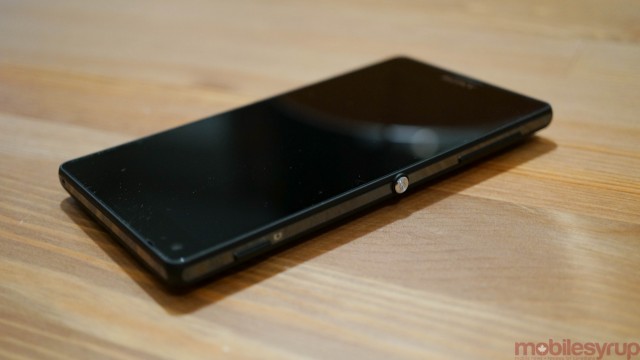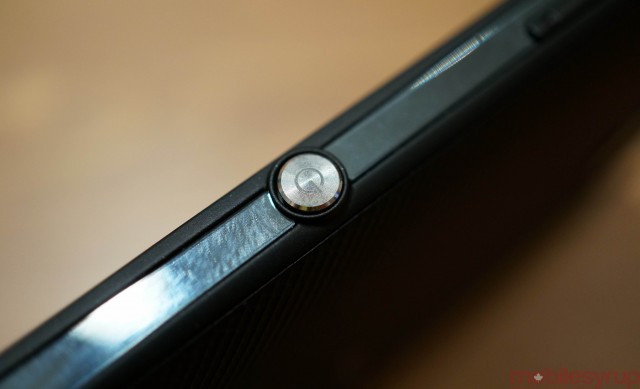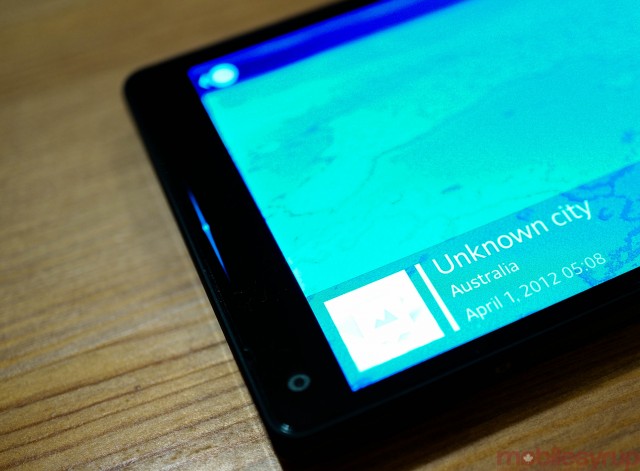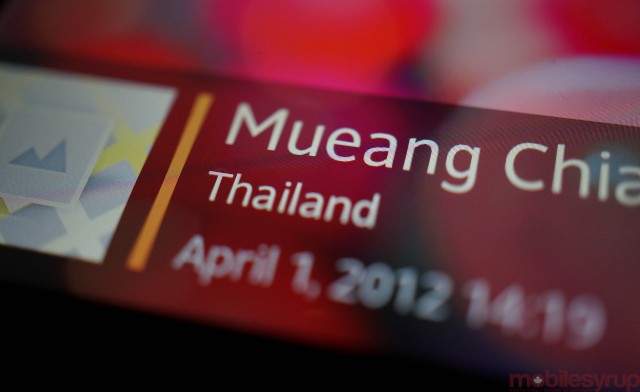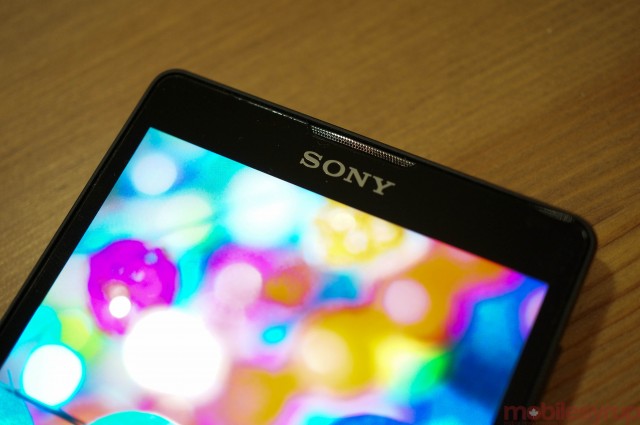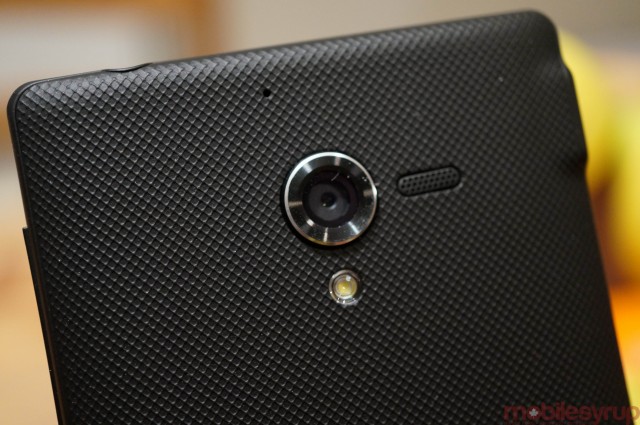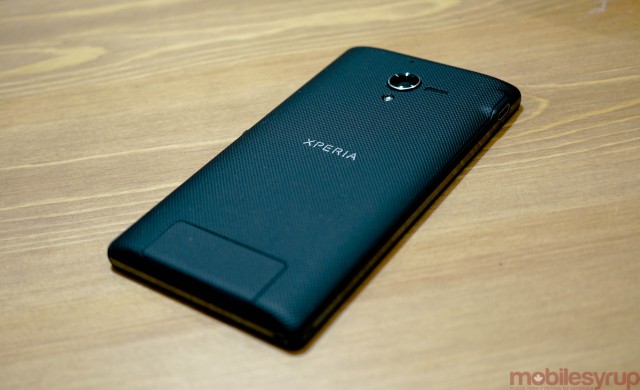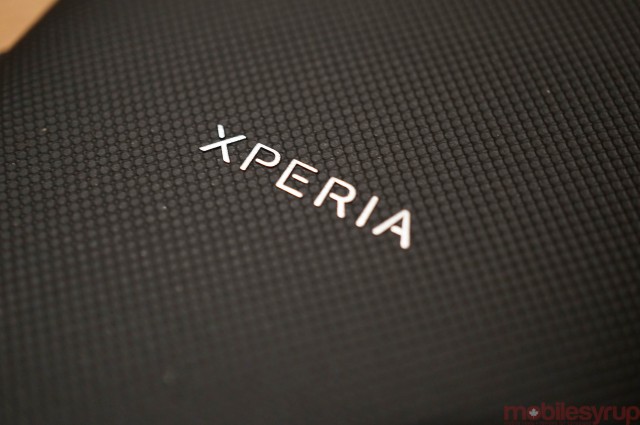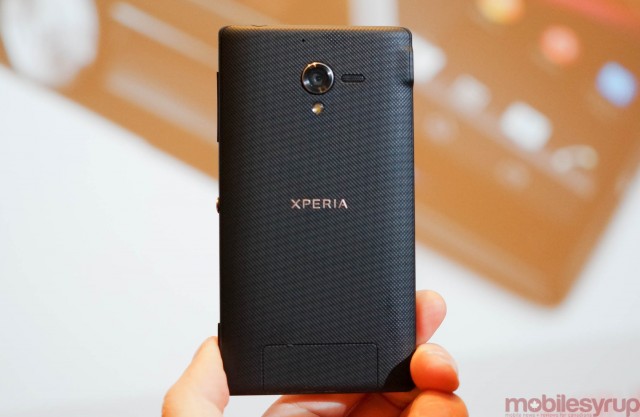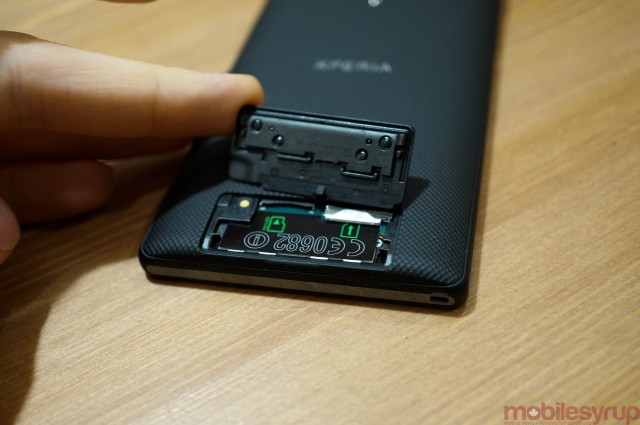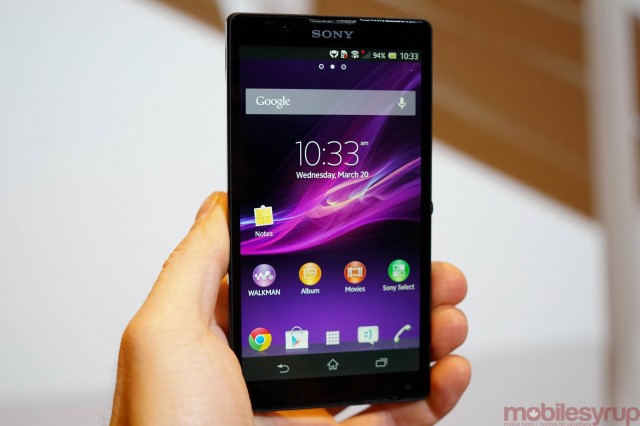
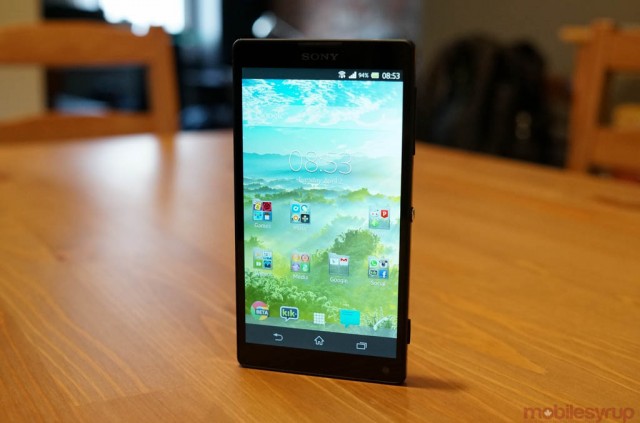
Like a number of Sony’s recent smartphones, the Xperia ZL is a strong contender for what will inevitably be known as the long race to the middle. In a market infatuated with two manufacturers, the battle for the remaining 10% of smartphone profit share falls to companies that were once seemingly indestructable.
The company admitted during its CES reveal that there have been a few missteps in recent years, focusing on products that became a distraction more than a boon to the brand. A ray of hope has been seen in the Xperia line of smartphones, which began with the X10 back in 2009 (has it been that long?) and has transitioned to the “better-better-best” trope of the Xperia S, Xperia T and now the ZL.
But coming up against marketing giants like Samsung and LG, as well as lithe companies looking to re-imagine the idea of a smartphone like HTC, how does Sony’s newest Android flagship fare? After nearly four months of waiting, let’s see if the Xperia ZL is worth your money.
Specs
– Android 4.1.2 w/ custom Sony skin
– 5-inch 1920×1080 pixel LCD Display
– 1.5Ghz quad-core Snapdragon S4 Pro SoC w/ Adreno 320 GPU
– 2GB RAM / 16GB internal storage (+microSD slot)
– 13MP Exmor RS sensor with f/2.4 lens, Superior Auto mode
– 2MP Exmor RS front camera
– 1080p video capture w/ HDR
– HSDPA 850 / 900 / 1700 / 1900 / 2100Mhz, LTE 700 / 850 / 1700 / 1900 / 2100Mhz
– 2370mAh non-removable battery
– 131.6 x 69.3 x 9.8 mm
– 151g
The Design
Sony hasn’t re-imagined the smartphone here, but the Japanese company has taken what could have been a large and unwieldy product and made it compact and pocketable. The ZL is unlike its Xperia Z counterpart in that it is not made of glass but plastic; it has a textured black backing, exposed ports and a slightly stouter design. Many will see it is less remarkable than the Z, but I say it suits my needs better.
To call the ZL monolithic would be doing a disservice to any device previously referred to as such. It is a deep well of blackness, barely distinguishable from a hock of granite. The 5-inch LCD makes up a comparatively enormous proportion of the device’s front, eschewing much of the bezel and space above and below the display. Because there are no capacitive buttons, and thanks to a repositioned front-facing camera (it’s on the bottom), the Xperia ZL is practically small for a device this size.
Its austerity continues as you turn the device to its right side. On it you’ll find a chrome bezel (it independently brandishes all four sides), a thin volume rocker near the top, an equally spare camera button on the bottom, and in the middle the pièce de résistance, a gorgeous machine-bezeled aluminum power button. Sony is evidently proud of it, as the design is consistent across all of its recent products. It’s weighted perfectly and is large enough to depress without looking. It’s accessible to both left- and right-handers and evinces a premium feel that, unfortunately, is largely absent from the rest of the handset.
Around back you’ll find the 13MP camera jutting ever-so-slightly from the non-removable rear casing. This is less an issue than in previous devices like the HTC One X because the lens is recessed just enough to be protected from scratches by a sturdy metallic ring. There is a mono speaker and LED flash to the right and bottom, respectively, and a tasteful Xperia logo in the centre, in line with the power button. It is touches like these that make the next one so baffling, and reinforce Sony’s predicament in the North American market.
Previous Sony devices had removable stoppers protecting the SIM and microSD slots. Most were on the side, while a few were behind a removable back cover that did not expose the battery. On the Xperia ZL, Sony decided to interrupt the flow of the phone’s rear plate with a flap that takes up roughly one sixth of the height of the cover itself. Not only does it look tacky but it often doesn’t snap properly back into place. The placement of such slots was likely borne from necessity, though Motorola solved this very issue by having a pin-removable tray on the left side of the RAZR HD LTE.
Sony did do right by its users, however, in terms of notification light; the company learned a thing or two about context-sensitive colours from the light ring on the Xperia U. The ZL’s notification light is capable of displaying dozens of colours and adapts to what’s on the screen; when looking at a picture of the ocean, for instance, it shines a lovely turquoise. A bright sunny day, yellow. A lush forest, green. It’s a minor point of vivacity on an otherwise-serious device.
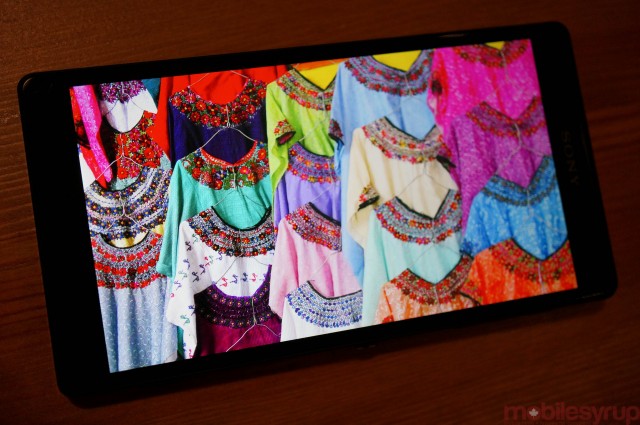 The Xperia ZL is the first smartphone released in Canada to offer a 1920×1080 pixel screen. Its 441ppi pixel density is astonishing; you will find text sharper and photos richer than on the previous generation of Android devices. Putting the jump in pixels in perspective, however, some may come away disappointed: this is not the astounding jump in clarity that was evident from WVGA (800×480) to 720p (1280×720).
The Xperia ZL is the first smartphone released in Canada to offer a 1920×1080 pixel screen. Its 441ppi pixel density is astonishing; you will find text sharper and photos richer than on the previous generation of Android devices. Putting the jump in pixels in perspective, however, some may come away disappointed: this is not the astounding jump in clarity that was evident from WVGA (800×480) to 720p (1280×720).
Sony has traditionally chosen excellent displays for its Xperia line, and the ZL is no exception. Colours are deliciously vivid and blacks are much darker than on last year’s Xperia S. The company’s chosen font strays slightly from Jelly Bean’s typical Roboto selection, but the serif selection suits the palette quite well. It’s also worth noting that, like its predecessors, the ZL supports Sony’s Bravia Engine. Iterated to version 2, Bravia Engine over-saturates photos and videos when turned on (via Settings/Display), rendering deep colours almost comical. I’d recommend keeping it off unless demoing the phone; the screen is fine without a visual equalizer.
The Xperia ZL falls short of its competitors and even the last generation of Xperia devices when it comes to viewing angles. Simply put, the Xperia ZL has contemptible colours, contrast and brightness at anything 5 degrees off centre. This flaw is not acceptable in today’s market, especially when devices are used for sharing among friends and family. Granted, the ZL is not a tablet, but its 5-inch screen makes it far easier to share a YouTube clip on than, say, an iPhone 5.
Thankfully, the Xperia ZL makes up for its major defect by offering superb maximum brightness levels, excellent contrast and accurate whites. Blacks are slightly too grey for my tastes, especially when compared to the superb gamut of the HTC One, but overall the Xperia ZL will not disappoint.
So too will its hand feel be acceptable to even the most astute critics; the 5-inch device is roughly the same size and thickness as the 4.7-inch LG Optimus G, though its construction is superior and denser. You’ll also notice that I failed to compare the ZL to its European cousin, the Xperia Z. While it may be a disappointment to some that Canadians aren’t able to pick up the taller, thinner, waterproof, glossy glass counterpart to the ZL, I’ve come to appreciate the homelier version’s compactness, its textured back cover that prevents slips, and its dedicated camera button that speeds up candids.
Performance & Software
The Sony Xperia ZL performs admirably for a high-end smartphone, but there’s no mistaking last generation’s hardware. The Snapdragon S4 Pro SoC is nearly identical to the Snapdragon 600 inside the HTC One and Galaxy S4, but its four Krait cores are 200-400Mhz slower and its Adreno 320 GPU is clocked nominally lower.
Because the Xperia ZL runs Android 4.1.2, there are two things to note: it feels neither as fast as the Nexus 4, which runs the same hardware on a low-resolution screen and a newer operating system, nor the HTC One, which sports a faster 1.7Ghz Snapdragon 600 processor with the same OS. But feeling subjectively slower than two of the fastest devices on the market does not make the ZL a poor performer. Sony’s software optimizations, especially in camera speed and 3D gaming, ensures its latest flagship is a tremendous achiever.
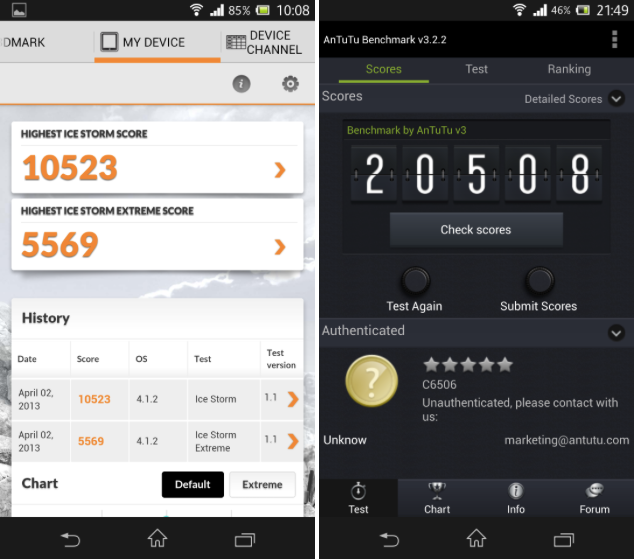
It’s also noteworthy that no high-end Android phone runs slowly anymore, so the distinction between generations of SoCs, especially one from the same family, is almost negligible. The Xperia ZL trounces the Nexus 4 in some benchmarks despite running identical hardware because its I/O scores (memory and storage speed, among other things) are much higher. But because the Nexus 4 is running Android 4.2.2, with improved graphics drivers, it scores higher than the ZL in 3D benchmarks.
Sony’s blend of software enhancements (it contributes a ton of code to Android itself) and its slew of highly-polished first-party apps make for a very satisfying Android experience. Like Motorola, Sony has opted to use on-screen navigation buttons, which have two advantages. First, unlike the HTC One, the keyboard appears consistently in the same place regardless of which app is open; there is no virtual menu button using up precious vertical pixels in non-compliant apps. The on-screen buttons can also disappear when watching video, expanding the entire display without compromise. Google Now is also more easily accessible with virtual buttons, as Google employs a simple swipe gesture from the home button.
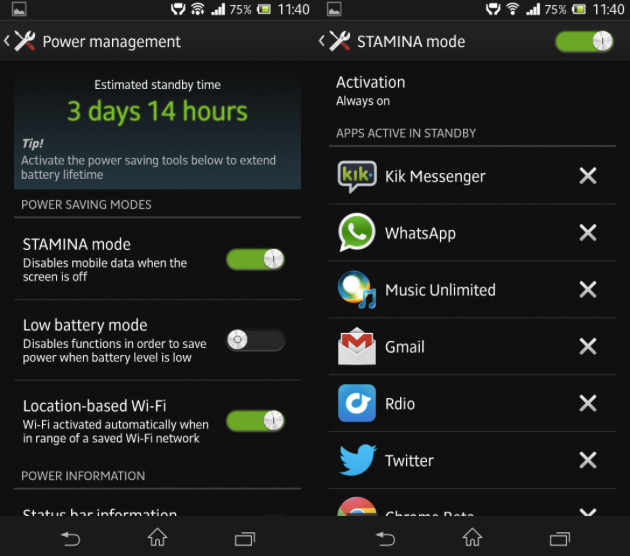
The Xperia ZL runs an almost identical build of Android 4.1.2 Jelly Bean as the recently-updated Xperia T. Sony’s adherence to Google’s design guidelines have pushed the skin closer to stock Android than even Motorola’s recent handsets. All augmentations to the experience are welcome, including settings toggles in the notification shade and a gorgeous lockscreen that provides quick access to the camera and music controls.
Sony’s push towards improved battery life has resulted in a feature called Stamina Mode, which turns off the phone’s data connection while the device is asleep. Thankfully, Sony allows an app whitelist, so essential items like Gmail and Twitter can continue to notify you even when the screen is off. Battery life noticeably improved with Stamina Mode, though the grandiose estimates of 3+ days uptime were overstated. More importantly, Sony does not throw the feature in your face like HTC does its Power Savings mode, and its granular controls make it a core part of the user experience.
Similarly, Sony offers Location-based Wi-Fi which uses your GPS to periodically check for saved wireless hotspots; if none are detected, Wi-Fi is turned off. As you’ll see later, these toggles were essential for maintaining full-day uptime.
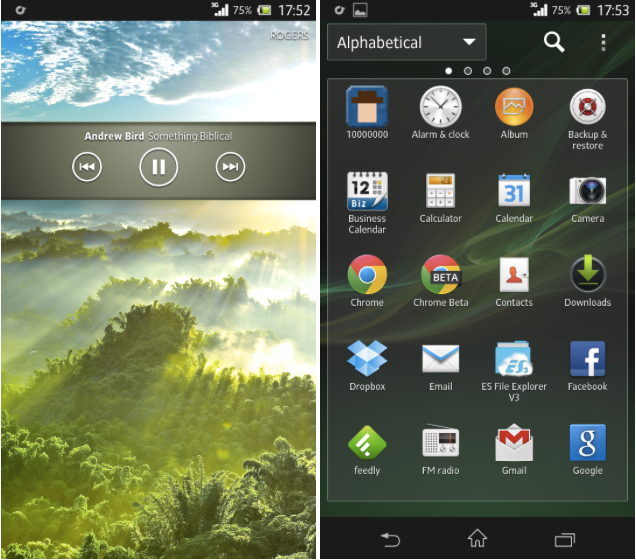
Using Sony’s launcher will be a familiar experience to most people: a four-icon dock remains, customizable, on the bottom, while the horizontal-oriented app drawer can be reordered in any number of ways. The built-in apps, such as Walkman, Album and Movies are impeccably designed, and fare better than most OEM’s stock applications.
Indeed, Sony deserves commendation on actually making good-looking Android software; its Messaging app, for example, is a testament to constrained minimalism and is gorgeous compared to what you’ll find on a Samsung.
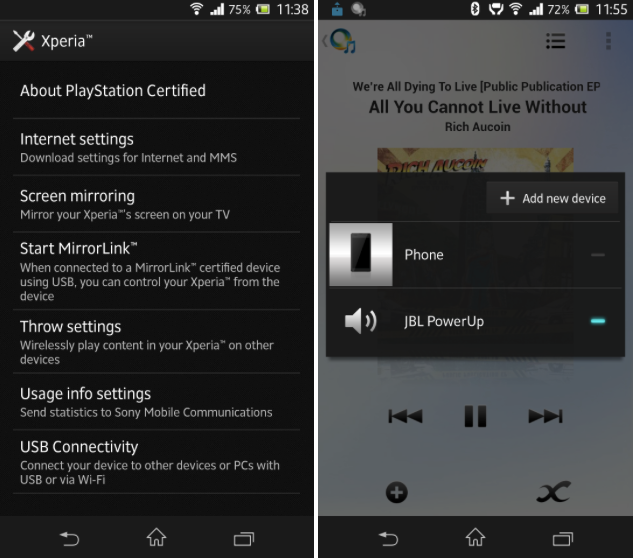
Because Sony is heavily pushing its “Throw” experience, users can use built-in Miracast support to mirror the screen and audio to a compatible set-top box like Netgear’s PTV3000. It also works with select Bluetooth-enabled stereos and headphones; while most Android devices are capable of such audio-visual acrobatics, Sony’s unification of the experience ostensibly makes it easier to accomplish. I was easily able to tap the NFC tag on a JBL PowerUp, which enabled Bluetooth on the phone and paired it with the speaker.
Once accomplished, a Throw notification is placed in the phone’s window shade, allowing you to easily sever the connection or switch to another paired device. This would work if, for example, you want to leave the house in a hurry and continue playing your music on your Bluetooth-enabled headphones.
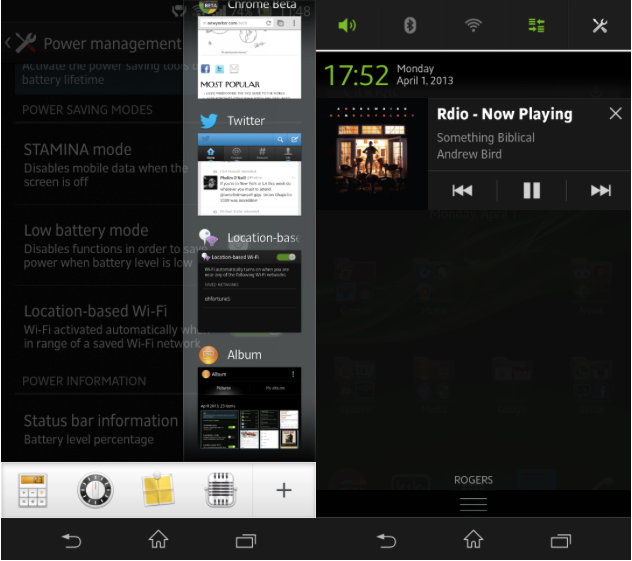 Despite not being as full-featured (read: busy) as, say, the Galaxy S4 or HTC One, Sony has done a commendable job tightening what aspects of Jelly Bean needed improving, while leaving the core aspects of what makes Android great — expandable notifications, lock-screen music controls, Google Now — intact.
Despite not being as full-featured (read: busy) as, say, the Galaxy S4 or HTC One, Sony has done a commendable job tightening what aspects of Jelly Bean needed improving, while leaving the core aspects of what makes Android great — expandable notifications, lock-screen music controls, Google Now — intact.
Camera
Sony has an impressive legacy of smartphone optics, and many of its competitors use its sensors in their own devices. But Sony has poured its best Exmor RS module into the Xperia ZL, a 13MP backside illuminated sensor and f/2.4 lens combo that promises improved low-light performance and impeccable detail in well-lit shots.
Though it boasts the same number of megapixels as the Xperia T, the Exmor RS sensor in the ZL is larger and has been redesigned to perform faster. Qualcomm’s Snapdragon S4 Pro chip allows for an instant shutter — the phone goes from sleep to shoot in around half a second — and even offers HDR video at 1080p resolution.
As expected, the Xperia takes photos of stunning accuracy and detail in forgiving weather conditions, but introduces a fair amount of noise at higher sensitivities, necessitated by lack of light.
As you can see, the Xperia ZL excels in good lighting conditions. With 13 million pixels to work with, the amount of detail it captures is astounding. The Superior Auto mode, to which it defaults, is taken from the company’s Alpha and NEX line of digital cameras and intelligently adjusts settings like white balance, sensitivity and shutter speed depending on the scene. For the most part, it would switch to Macro when attempting to focus on a nearby object and would turn on HDR when shooting a backlit scene.
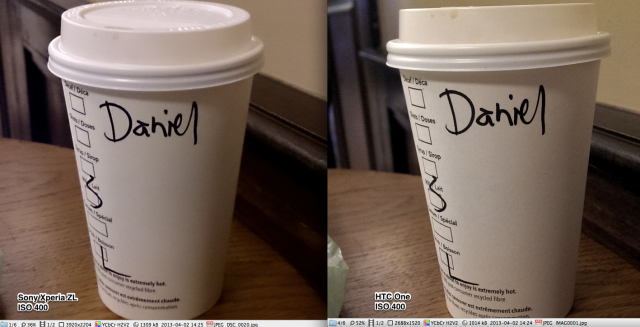 As expected, however, the high density of the sensor’s pixel array is a liability in low light. Compared to the HTC One, even at identical sensitivities, the Xperia ZL introduces noise, distortion and aliasing. You can also see aberrations around text from a software sharpening algorithm that does more harm than good in low-light photos.
As expected, however, the high density of the sensor’s pixel array is a liability in low light. Compared to the HTC One, even at identical sensitivities, the Xperia ZL introduces noise, distortion and aliasing. You can also see aberrations around text from a software sharpening algorithm that does more harm than good in low-light photos.
 The lens also has problems focusing on macro shots, an issue that is exacerbated by poor lighting conditions. As you can see below, increasing the sensitivity to ISO 1600 completely ruins the photo on the Xperia ZL whereas the HTC One handles the scene with aplomb.
The lens also has problems focusing on macro shots, an issue that is exacerbated by poor lighting conditions. As you can see below, increasing the sensitivity to ISO 1600 completely ruins the photo on the Xperia ZL whereas the HTC One handles the scene with aplomb.
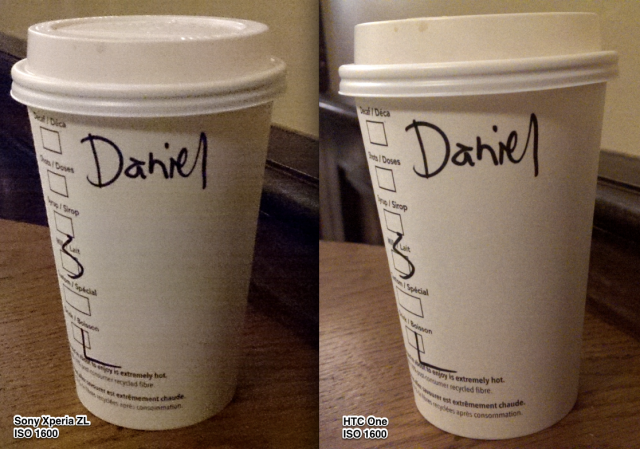 You are, of course, comparing apples to oranges in this scenario, since in situations where light is plentiful the Xperia ZL blows the One’s 4MP sensor away. We’ll go over these various scenarios in more detail in a separate post.
You are, of course, comparing apples to oranges in this scenario, since in situations where light is plentiful the Xperia ZL blows the One’s 4MP sensor away. We’ll go over these various scenarios in more detail in a separate post.
The Xperia ZL captures 1080p H264 .MP4 video (1920×1080 pixels) at 30fps with a 18-20Mbps bitrate depending on the complexity of the scene. While the results are generally free of distortion, despite being blissfully smooth there is a softness that we were disappointed to see. HDR Video attempts to improve the poor dynamic range found on smartphone videos, which it does, and it has a pleasant side effect of lightening low-light capture as well. HDR Video doesn’t alter the capture method at all — video is still 1080p H264 codec at 30fps with 18Mbps typical bitrate — so any improvements are a combination of software tweaks and the Snapdragon’s improved digital signal processor.
Audio is thin but passable, and the phone brings in a stereo stream at 48Khz.
As it also supports rapid-fire bursts of photos and an excellent panorama mode, the Xperia ZL, despite its lacklustre low-light capture, is an excellent camera for most situations.
Battery Life
Sony devices have always struggled with staying alive for more than eight hours, and we were concerned that the combination of a 1080p display, LTE connectivity and a quad-core processor would lead the Xperia ZL to the same fate.
Out of the box, the situation is pretty dire. Despite housing a 2370mAh battery, fairly standard for a modern smartphone, the phone barely lasted more than eight hours on a charge. Switching off LTE helped somewhat, but it wasn’t until we turned on Stamina Mode that the phone began lasting long enough to stop worrying about it.
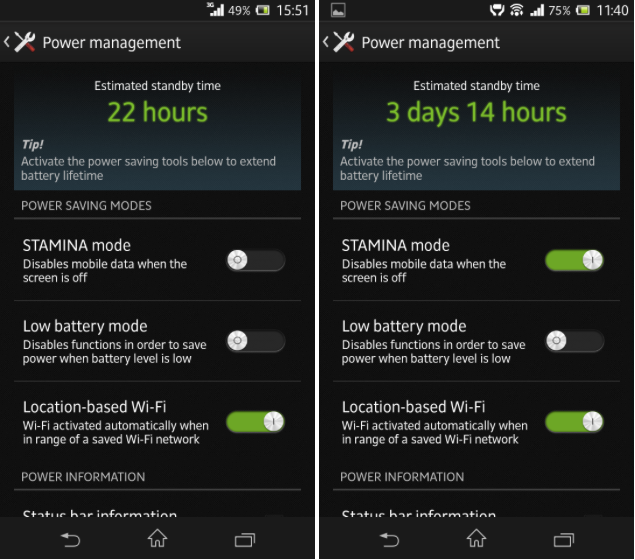
Stamina Mode works by turning off background data to apps when the screen is turned off. Because of Android’s open nature, apps can call home, so to speak, whenever they want, unless proscribed by the OS. Android 4.0 added the ability to turn off background updates on a per-app basis, but few users go to the trouble of configuring this. Sony’s approach — turning off data when the screen is off, but providing a whitelist for certain essential apps — avoids the pitfalls of stock Android and works very well. It also proves that poor battery life on most Android devices is mainly a fault of the open nature of the operating system, not an OEM issue.
But we can’t let Sony off the hook entirely. The company continues to struggle against companies like Motorola, Samsung and LG when it comes to battery life, and if you choose not to partake in the Xperia ZL’s extensive battery-saving features, you’re looking at a daily afternoon charge.
Call Quality & Network Speeds
The Xperia ZL is decidedly middle-of-the-road when it comes to call quality and and speaker volume. Calls came through loud and fairly clear over the Rogers network, though I had trouble differentiating between which ones were and were not in high definition, despite making calls to Rogers customers I knew had HD Voice-enabled handsets.
The rear speaker was shrill and quiet when compared to the iPhone 5 and the new bellwether, the HTC One. It did suffice for the odd Skype video call, but I’d recommend “throwing” your audio to a speaker dock for a better experience.
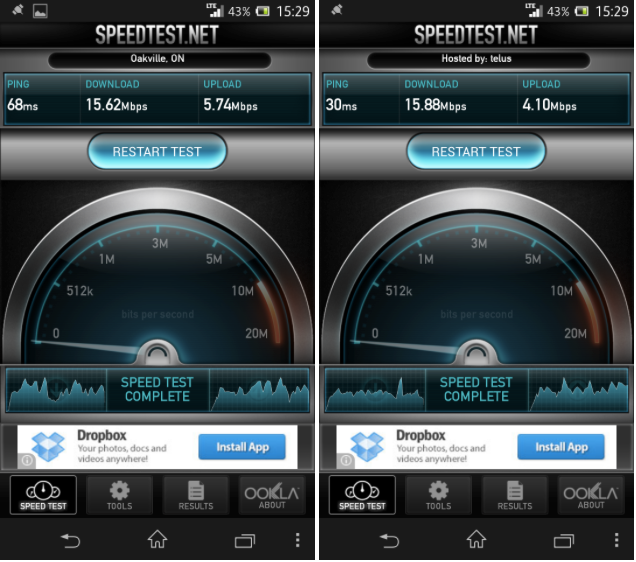
Network speeds were excellent over the Rogers LTE network, though they didn’t match those of some other handsets we’ve reviewed recently. We achieved 15-18Mbps down and 4-6Mbps up in most places around Toronto.
A Few More Notes
– The included keyboard is plain bad. While it seems to function well enough at first, you’ll soon realize that, coupled with finicky touch responsiveness, the screen doesn’t always detect input. Unlike alternatives like SwiftKey and Kii Keyboard, Sony’s input method always assumes you’re starting a new word after a backspace. So if you type a word incorrectly and go back and correct it, it begins autocorrecting right away, rather than continuing to correct the previous word. It’s frustrating.
– I experienced some strange software glitches that would take a reboot to fix. For example, auto-sync randomly turned itself off one afternoon, and I missed several important emails as a result. Similarly, Location Services would randomly turn itself off and even when toggled back on the phone wouldn’t be able to find my location until I reset the device.
– The default notification and phone call tones are far more enjoyable than those found on the Xperia T, which assumed everyone enjoys hearing a digitized version of the James Bond theme, over and over.
– The microUSB port doubles as a MHL port for HDMI input to a TV. I don’t have a MHL cord so I couldn’t test this functionality, but Sony offers a TV dock for around $70 if you’re so inclined.
– PlayStation Mobile is barely a feature at this point; the content just isn’t there to make the alternative game store competitive over Google Play.
– The phone comes with an IR blaster and a really nicely-designed universal remote app that can be configured to work with nearly any manufacturer’s AV equipment.
– The device charges quickly, owing to a relatively new tweak in Qualcomm’s Snapdragon power interface. You’ll likely recharge in 3-4 hours with the included AC adapter, but even 20 minutes plugged in will give you enough of a boost for a couple hours of usage.
– The question of when the Xperia ZL will be updated to Android 4.2 remains a contentious one. With the Galaxy S4 launching in under a month (most likely), Sony’s flagship will soon be at a disadvantage. While the gulf isn’t as large as it was from ICS to Jelly Bean, the lack of lockscreen widgets and substantial performance improvements in Android 4.2 will matter more and more as devices are released with newer versions.
– Sony’s locked down the Xperia ZL’s bootloader on carrier units, making it nearly impossible to load custom ROMs on the device. Keep that in mind.
Conclusions
Sony’s Xperia ZL is an excellent smartphone. But, like I said about the Xperia T, it’s going up against the most competitive smartphone market in history.
There is no question as to whether the phone is Sony’s most well-built, nor if it has a great screen or camera. The issue is that there are devices like the HTC One and Galaxy S4 that purport to do most things better, faster and more efficiently.
For a 5-inch smartphone, the Xperia ZL is extremely compact and comfortable to use with one hand. Its integration with Sony’s ecosystem will be emphasized in its marketing, but at the end of the day you’ll derive little advantage from the Walkman or PlayStation branding over a competing OEM. Rather, Sony should focus on its strengths: a superb camera experience, a remarkably sharp display and Android experience with substantive advantages over its competitors.
Whether these inclusions will be enough to spur sales remains to be seen, but barring an HTC-like re-imagining of its smartphone portfolio, the Xperia ZL appears to be the best Sony can offer.
What Works
– Bright, accurate, sharp 1080p display
– Restrained improvements to the Android experience
– Excellent first-party app design
– Good performance in apps, games and throughout the OS
– Superb camera performance and feature set
– Stamina Mode is a battery saver that isn’t a gimmick
– Great industrial design
What Needs Work
– Disappointing battery life without tweaking
– Awful viewing angles
– Camera struggles in low light
– Thin, sibilant mono speaker on the back
– Textured backing lacks high-end feel compared to rest of device
– Screen is a fingerprint magnet
MobileSyrup may earn a commission from purchases made via our links, which helps fund the journalism we provide free on our website. These links do not influence our editorial content. Support us here.

